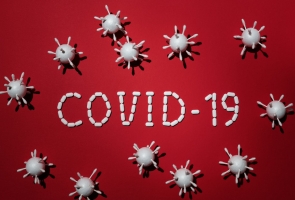The COVID-19 crisis has forced a number of changes, not the least of which being tele-med appointments for minor, non-life-threatening emergencies. While it’s always preferred to see patients in person, this kind of service delivery method has gone from one of the least preferred patient interaction methods to one that could save lives when properly implemented.
It also presents an opportunity to present your medical practice as one that provides truly personalized digital-based care. Yes, I am savoring this irony along with you: remote care equating to a more personal experience. The fact of the matter is that it’s true and is made more true when medical practices produce follow-up content that keeps the patient feeling connected.
Patients need to feel like their doctors remember them from one visit to the next, and I’m going to show you a few ways to accomplish this in a pandemic environment. You don’t need to develop content for individual patients to make the experience personal. Here are a few ways to accomplish that goal:
1. Follow Up with Email Immediately
Most medical practices have been collecting email addresses for years and not making full use of them. By simply compiling a list and uploading your patients’ emails to an autoresponder service, like Mail Chimp or Constant Contact, you give yourself a whole new way of following up while reducing overhead and saving valuable administrative time.
These email addresses are gold, and they form the foundation of all your digital follow-up efforts. This is true for individual campaigns or for mass mailings on subjects that relate to a majority of your patients. Some of the following relate to both scenarios, so keep reading.
So, what does “immediately” mean? Within 24 hours is good; within minutes is better. The autoresponder services can facilitate both, so choose one with the capabilities you need. Other services, like IFFT, can streamline the process even further. Don’t have time for all that? A medical content creation service, like Beez, can also help.
2. Leverage SMS or App-Based Reminders
Many practices now have their own patient interaction apps. If yours already does, be sure your patients have it installed and are registered. Email is also a great way to reach out to the ones who haven’t and persuade them to do it. Explain how installing your app will help facilitate better communication and care and include a pointed call to action to tap the appropriate link to download and install. Be sure to include links for all major mobile platforms (iOS, Android, and Windows Mobile).
Your app can be used to streamline scheduling; promote new, interesting, and relevant content, like blog posts; and grow your social media audience(s). Provide users with appropriate buttons and links to like your pages and join your groups from within the app.
3. Send Scheduling Reminders
Patient emails can also be used to send scheduling reminders. I prefer this method to SMS messaging, but each one does its own advantages. Email, for example, allows for that extra degree of personalization and slightly longer messages. SMS is better for fast, immediate responses.
If a follow-up is already scheduled, SMS is historically more effective in ensuring that the appointment is kept. If patients have been putting off scheduling, email can be more persuasive and long-form. This is why I like it more: It offers more personalization and more comprehensive messaging options.
In most cases, text messages simply ask people to contact you to schedule or confirm scheduling. Email allows you the opportunity to explain why they should and communicate urgency. Always include a direct, clear call to action to call, respond by email, or whatever your preferred scheduling method dictates.
4. Send Targeted Blog Content
Sending email, text, and app-based alerts for content that is personally relevant also creates a more individualized experience for the patient. This is easy if yours is a specialist practice. It requires a few more steps for general practitioners but can be automated through the use of tools like those mentioned above.
When patients get emails and texts directing them to content that relates specifically to their issues, it communicates an understanding of their needs. Blog posts that encourage good wellness habits and consistency with managing their conditions keep them connected and engaged. They also go a long way toward building and maintaining trust.
5. Remind About Your Social Media Channels
Your social channels are also a powerful tool for keeping patients engaged and connected. Add reminders to like and follow you on social media in all your patient communications and follow up by maintaining a steady stream of consumable and sharable content. This includes blog content, videos, and links to relevant, vetted, outside sources for starters.
Remember that we at BeezContent are here to help with all your content creation needs. If you’re having trouble figuring out where to start or how to put a solid follow-up campaign together, contact us. We’re here to provide you with the help and support you need to get and stay better connected to your patients through quality medical marketing content.




